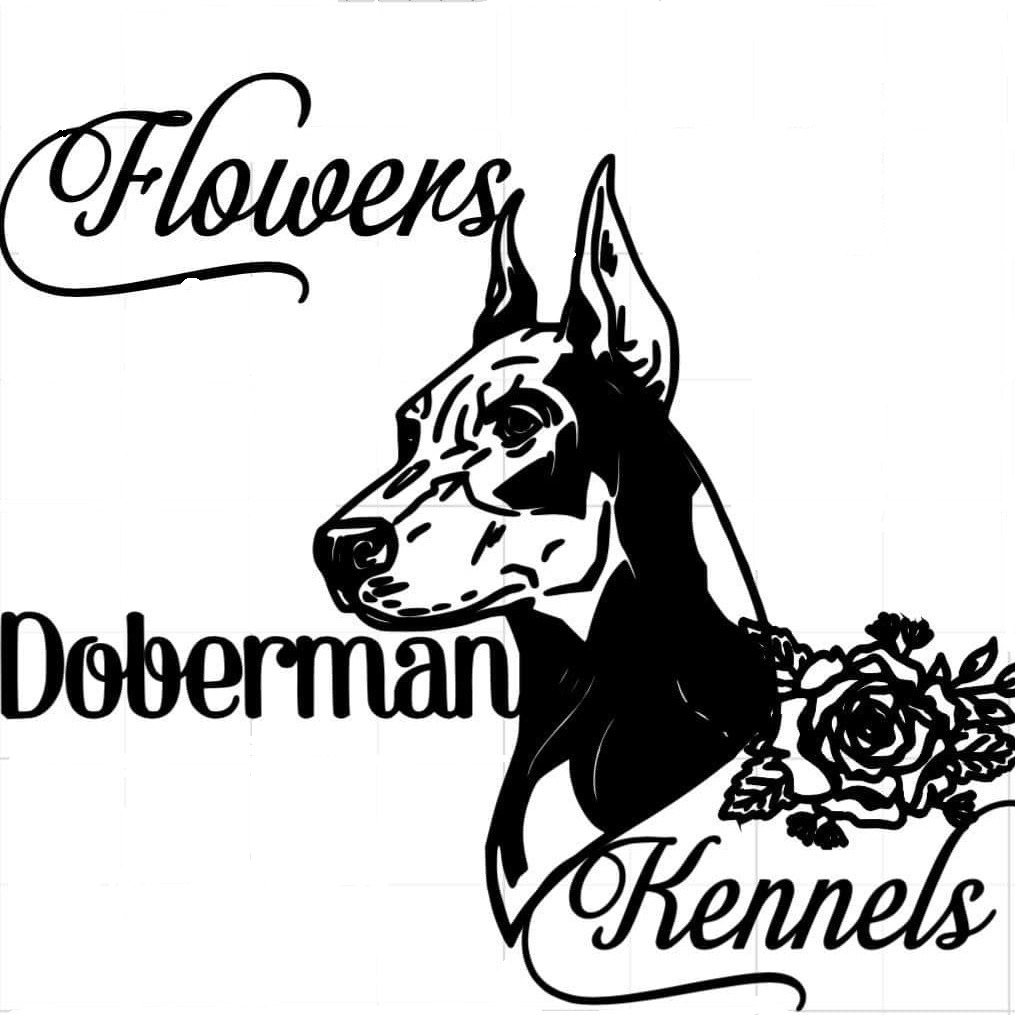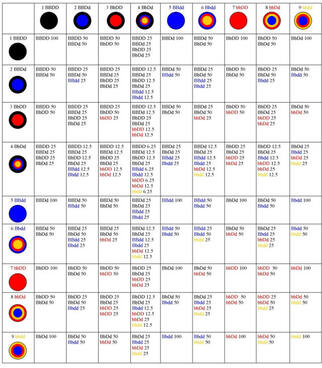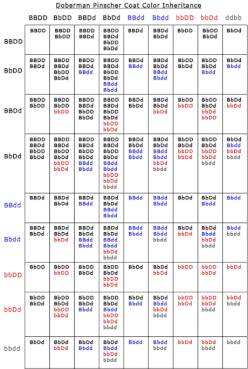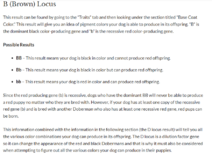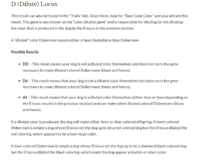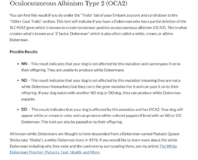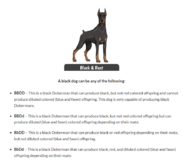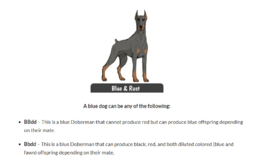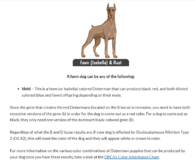Basics of Doberman Coat Genetics
Every Doberman carries a coat color. There are four different types of black Doberman; they all look the same with a black coat and tan/rust points, but genetically they are different in that when bred they can only produce colors within their genetics. Example, a #1 black can only produce black pups no matter what it is bred to, where a #4 black can produce a rainbow litter (one with all colors) if bred to another #4 black, to a #6 blue, to a #8 red, or to a fawn (#9). The coat colors are assigned letters based of the part of their genes responsible for colors; B lotus (BB, Bb, or bb) are responsible for a black or red coat. The D lotus (DD, Dd, or dd) is responsible for if a dog carries dilution (Dd) or for "diluting" the coat to either a blue or a fawn if the dog (dd). A DD on the D lotus does NOT carry dilute and can NEVER produce blue or fawn puppies. To add a bit more, dogs that carry two defective genes at SLC45A2 will be albino (termed "white" by many supporters of this color color being bred). A dog with only one SLC45A2 gene will be a traditional coat color but will be able to produce albinos if bred to either another carrier or effected/two defective genes. A albino dog's genetics will show as a traditional coat color, such as a BbDD (black coat) but the two SLC45A2 genes suppress the melanin production resulting in a "white" coat (shade varies from a light cream to a bright, snow white). A "white" Doberman is by all scientific
primary locus to focus on
